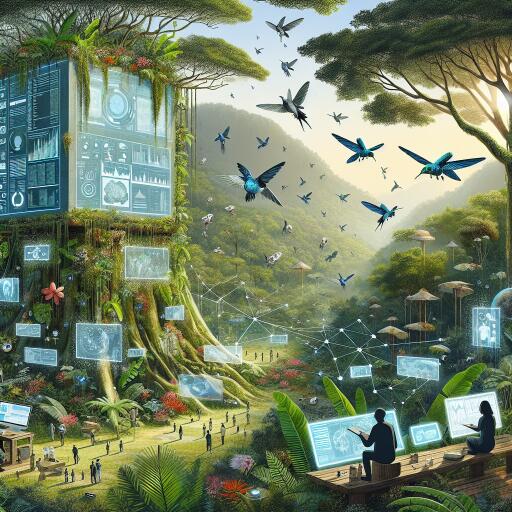
Boosting Conservation Efforts via AI
Nestled in the suburban landscapes of Tai Po, approximately 2km from the town center, is Fung Yuen, a designated priority site under the government’s New Nature Conservation Policy. Fung Yuen Butterfly Reserve, managed by the Environmental Association, provides a thriving habitat for butterflies that once numbered around 70 to 80 species. Over the last two decades, this number has dramatically soared to more than 220 species, covering roughly 90% of all butterfly species known in Hong Kong.
The Environmental Association remains steadfast in its conservation missions and has decided to harness smart technology as a means to elevate these efforts. This endeavor marks a pioneering step in the intricate dance between technology and ecology.
Yau Wing-kwong, the Environmental Association’s Chief Executive Officer, highlights the diverse array of over 200 butterfly species in Hong Kong. Each species is unique, displaying variations in appearance due to seasonal changes. Such diversity presents a challenge in identification when relying only on visual aids and reference books. To address this, an artificial intelligence (AI) system has been introduced.
Currently in its nascent phase, the AI system demonstrates the capability to identify 10 butterfly species, such as Danaus genutia, with exceptional accuracy. The ambition is to extend these capabilities to encompass 245 species within the next two years.
Once perfected, this system will be made publicly accessible. This means residents can utilize the tool by uploading photographs of butterflies found in local suburban areas. In return, they will receive immediate species identification and related information.
“In future developments, the AI tool will take on roles in conservation analysis,” Yau explains. “We can install cameras within the butterfly gardens, where they will capture images of these creatures. The system will analyze the data, revealing the variety of species present, their interactions with the flora, and other environmental factors.”
This approach predicts a future where conservation work is done more efficiently and with reduced manpower.
The Environmental Association’s efforts are supported by the Environment & Conservation Fund along with successive aid from the Countryside Conservation Funding Scheme. These contributions facilitate the ongoing Nature Conservation Management Agreement Project in Fung Yuen, bolstering these progressive conservation techniques.
The forward-thinking AI butterfly identification system also receives backing from the Countryside Conservation Funding Scheme’s most recent round of funding. Yau expresses deep appreciation for continuous government support, acknowledging that “conservation efforts require both monetary resources and substantial backing.”
Since 2018, the Countryside Conservation Office, a branch within the Environment & Ecology Bureau, has been instrumental in orchestrating sustainable development throughout remote countryside regions. By October 2019, this evolving office launched the Countryside Conservation Funding Scheme, endorsing 50 initiatives with an aggregate fund nearing $270 million slated through 2024.
Matthew Tang, Countryside Conservation Manager from the Environment & Ecology Bureau, discloses that these sanctioned projects tackle a broad spectrum of conservation aspects and countryside revitalization. Most notably, projects involving nature conservation management agreements are vital, acting as guardians over approximately 560 hectares of wetlands and about 10 hectares of traditional farmland. These habitats are crucial sanctuaries for various species.
Tang underscores the essential nature of these conservation initiatives, stating, “These endeavors not only stabilize species populations within conservation zones but also facilitate the continued recording of protected species and discoveries of new ones, underscoring their enhancement of the ecological values within these sites.”
This strategic integration of AI in conservation efforts symbolizes a transformative chapter in preserving biodiversity, emphasizing a future where technology not only complements but also invigorates our commitment to safeguarding natural habitats.





Leave a Reply